Date: Jan 29, 2020, Time: 1:00pm, Weather: Sunny but very cold (-8°C)
This semester I decided to stick with my original site right next to Centennial Woods. The last time I visited my site was before Thanksgiving Break so there have been many phenological changes since I last visited. One of the biggest phenological changes that many natural areas experience from fall to winter, besides the inclusion of snow and in this case also ice, is the loss of leaves from all deciduous trees and this is true for mine, with some remaining dead red oak leaves just barely hanging on branches. This is also true for the large fern field that was at the end of the clearing, it was just covered with snow that had turned into ice. Even with the drastic physical change, there were still some similarities from the last time I had visited, such as the birds still being prevalent through their chirps. In fact, there were quite a number of different birds that I heard during my time there.
One of the first I had noticed when I first saw my site was the abundance of non-human tracks on the snow (Fig. 1). Although, I have never done tracking of any sorts before I am mostly confident that I was able to identify some of the tracks that I had found like the cottontail rabbit (Fig. 5.) with some scat that I think is deer scat (Fig. 7). Here are the pictures and measurements that I took during my time there. I used the “Mammals Tracks and Scat: Life-Size Pocket Guide” by Lynne Levine to check the scat and tracks for each of the different trails that I found (Lynn, 2008). However, the iced-over snow made it hard to identify some tracks more than others.
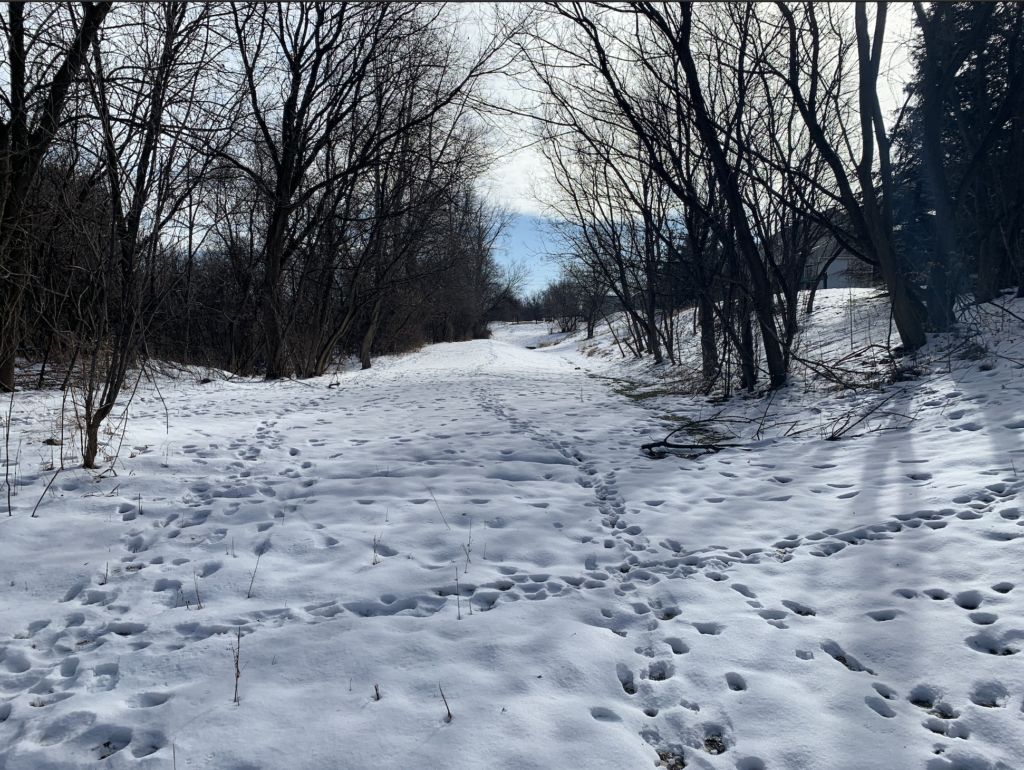
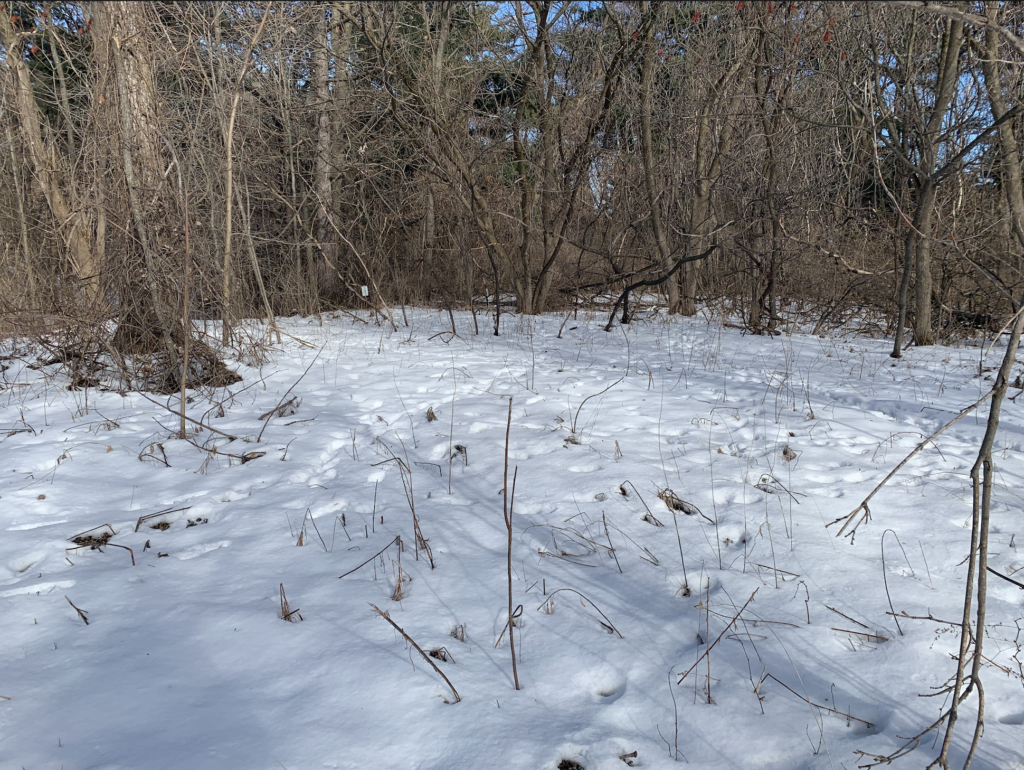
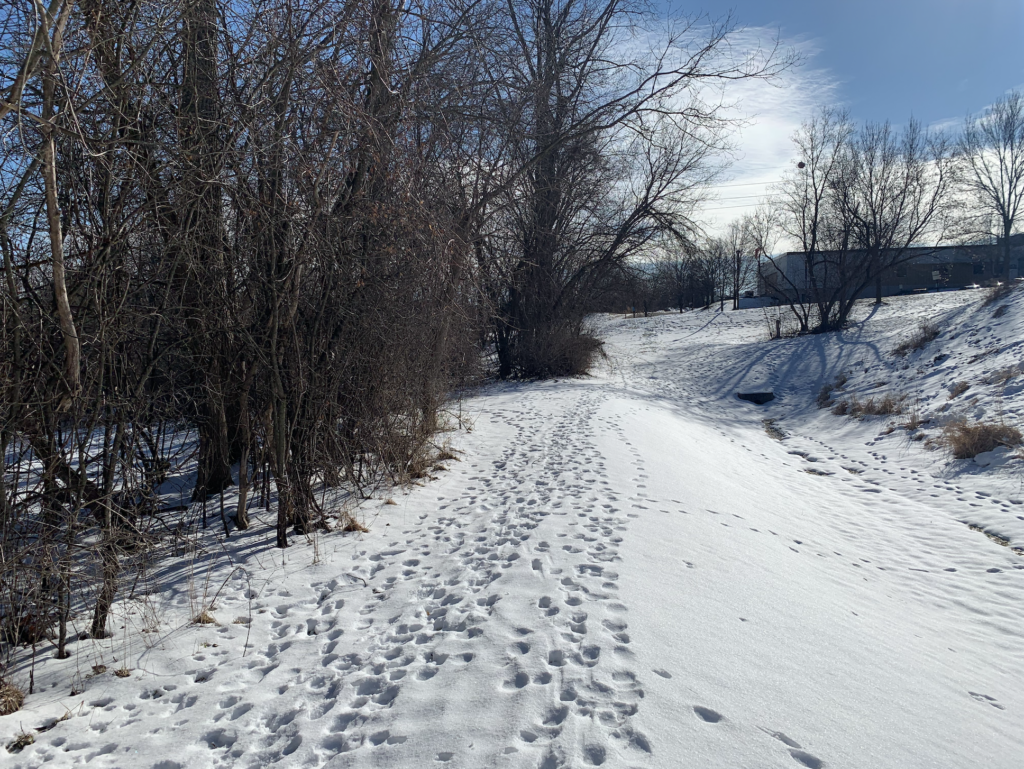
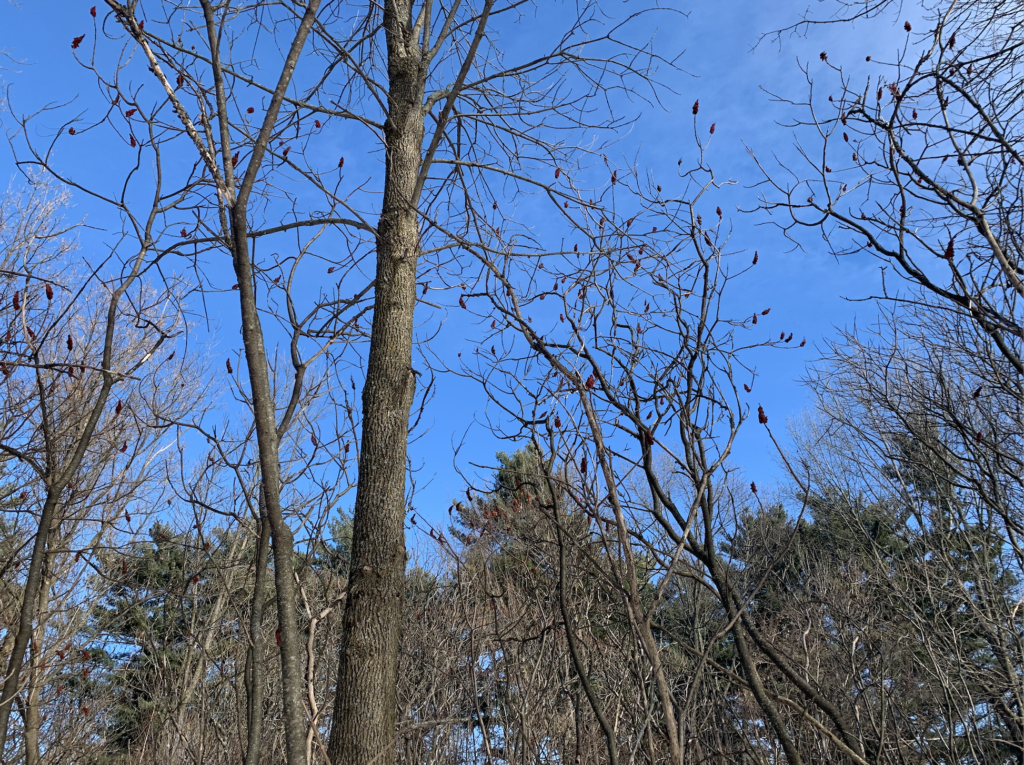
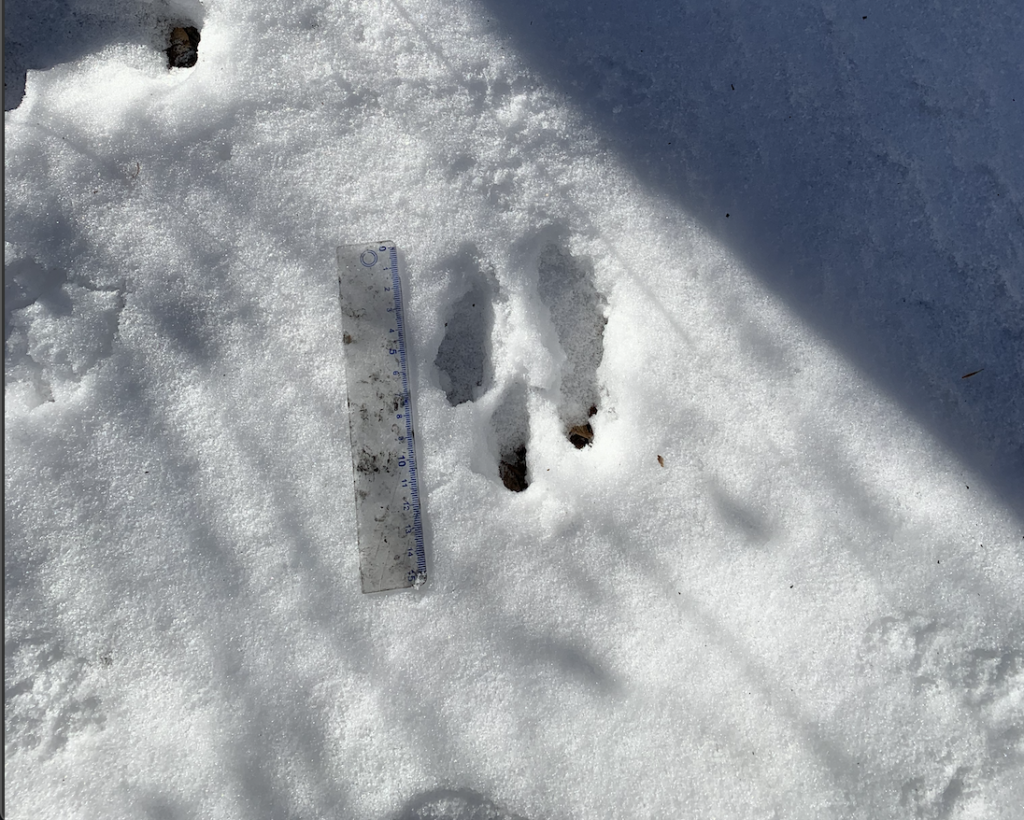
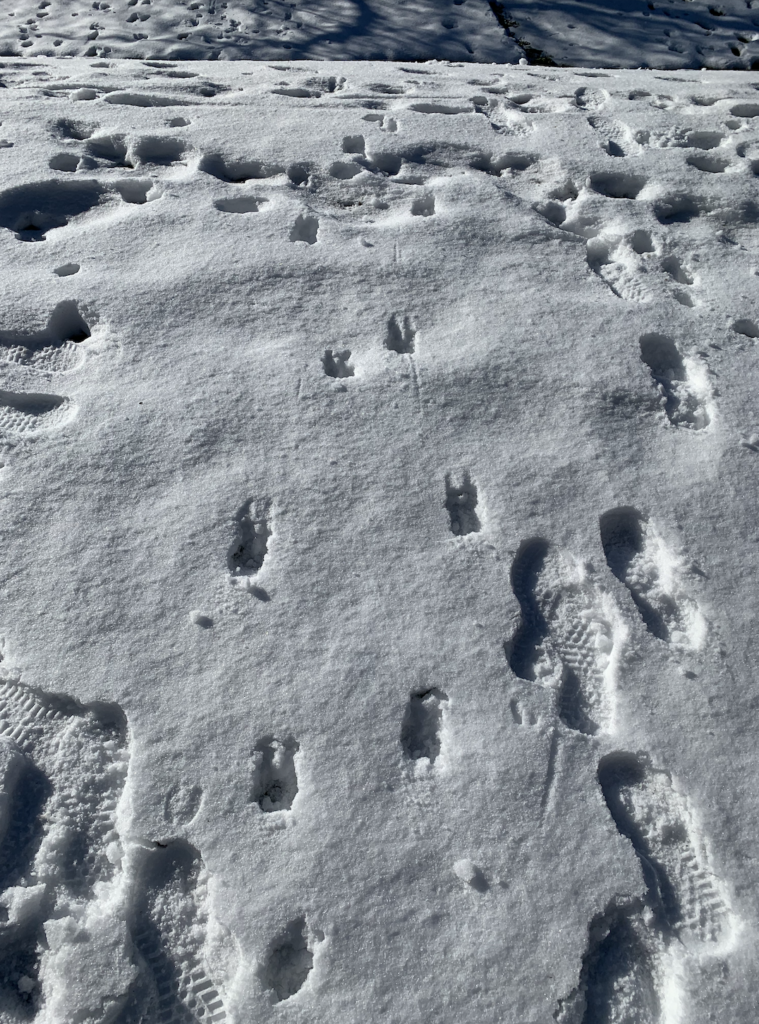
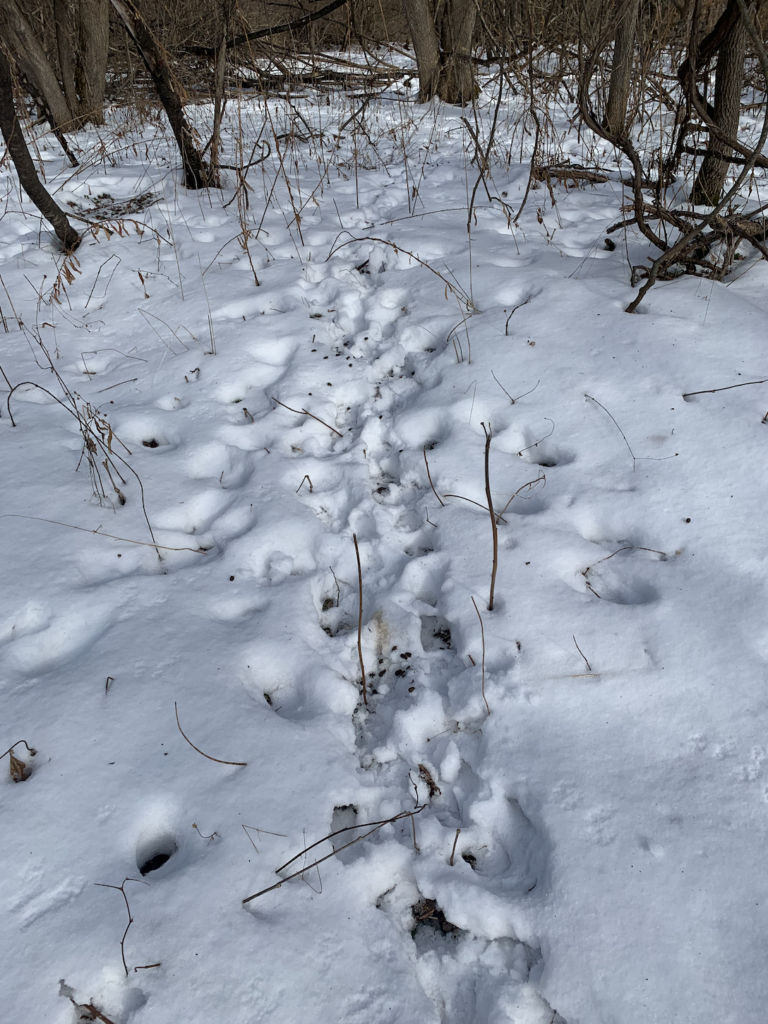
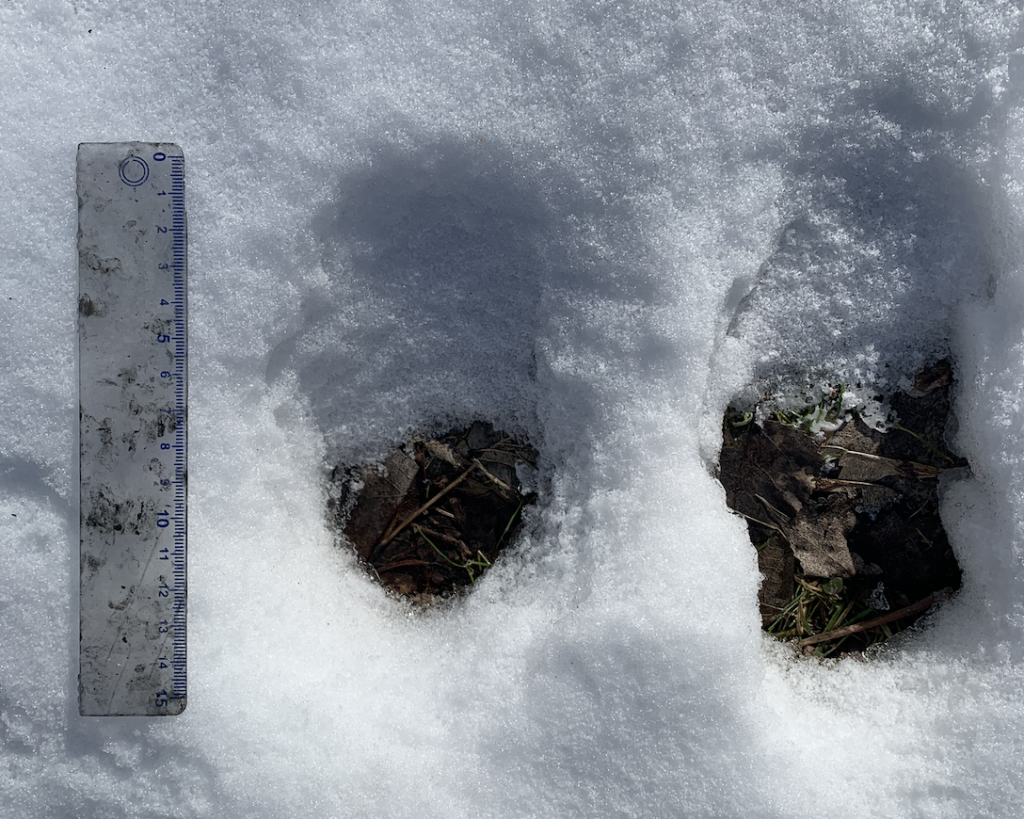
Another part of this lab was twig identification. I was able to find a boxelder twig that was easily identifiable due to its leaf scars around the ring of bud scale, and its spherical lateral buds around the terminal bud and bud scales (Fig. 9).
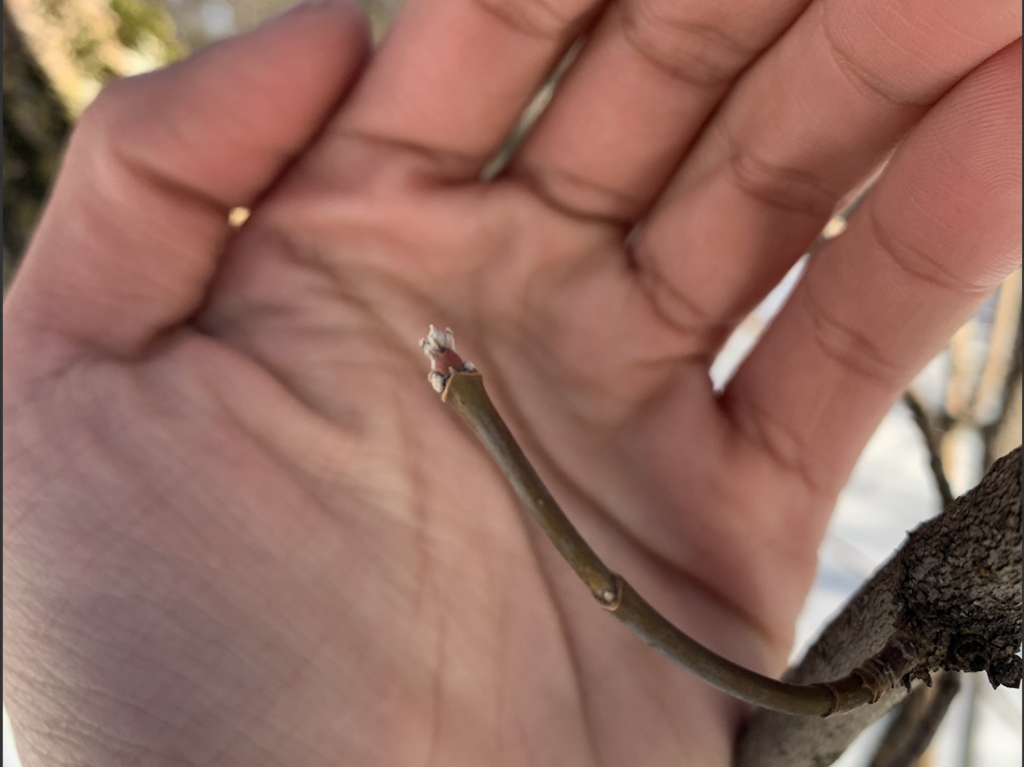
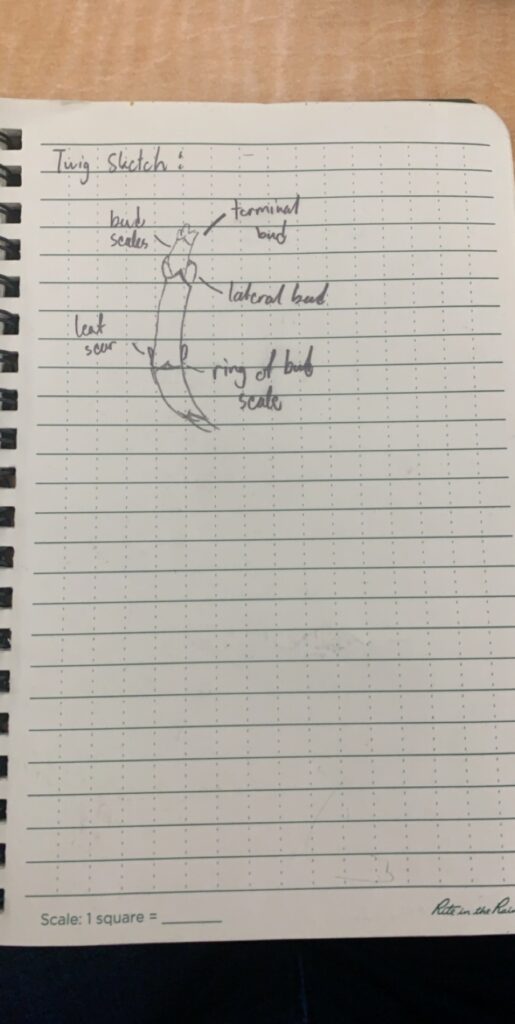
In summary, my site showed to have a lot of life nearby. The massive amount of tracks show a rich amount of wildlife passing through the clearing. I understand that it is near a small suburb so there would also be a fair amount of domestic dog tracks too. But it is still nice to see that deer, rabbits, squirrels, and chipmunks (although they are hibernating now) still use this area to pass by. The next time I visit my site I will go further into the Centennial Woods but not on the trail to hopefully find some more species of wildlife Hopefully, there will be more wildlife nearby next time!
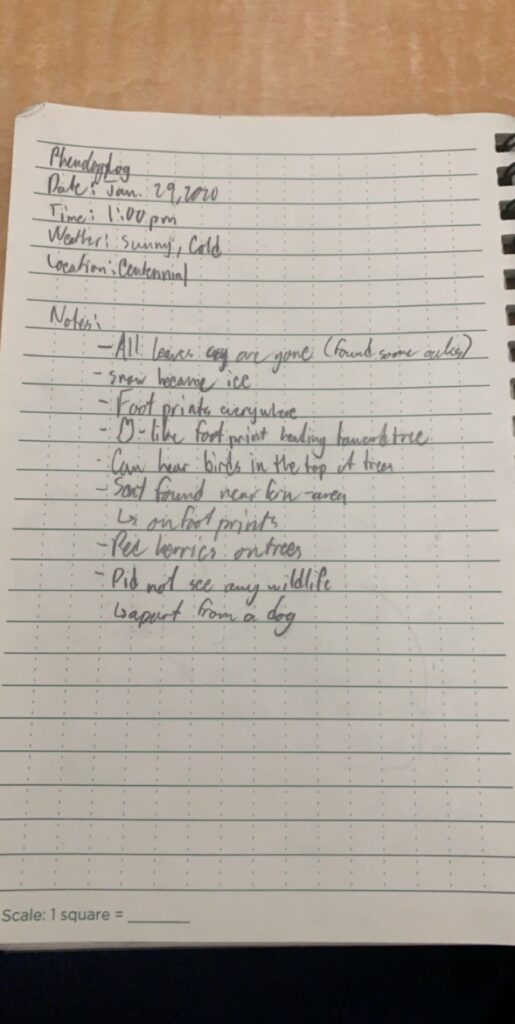
References: Levine, L., & Mitchell, M. (2008). Mammal tracks and scat: life-size tracking guide. East Dummerston, VT: Heartwood Press.
